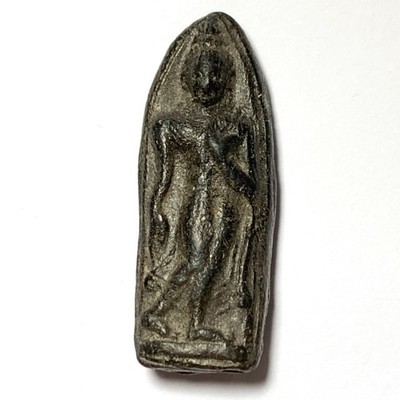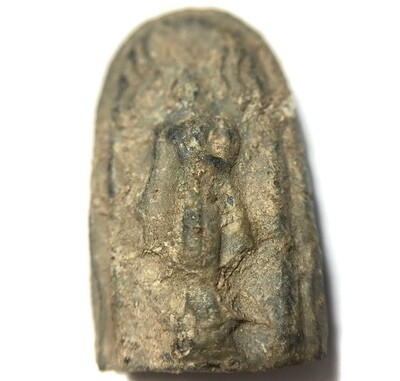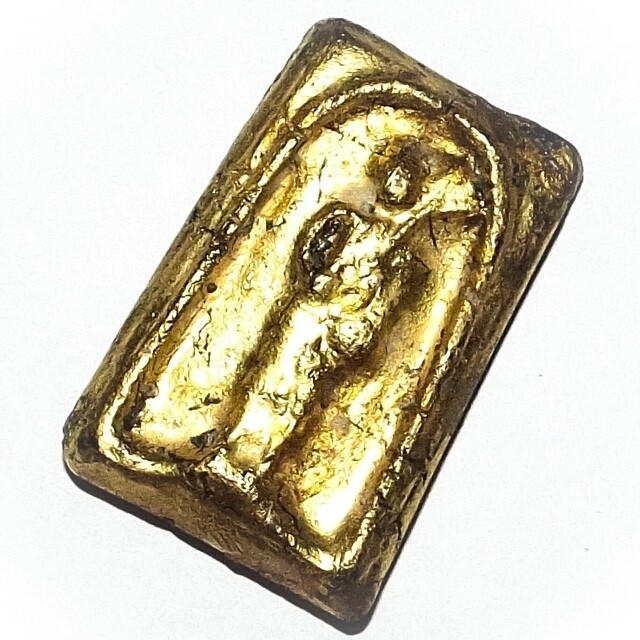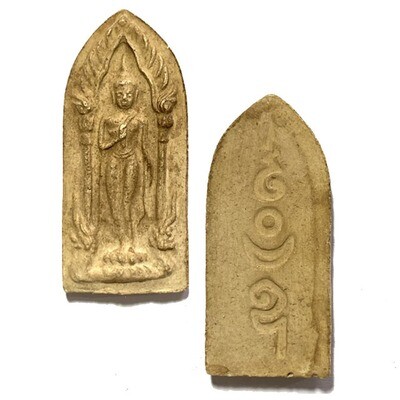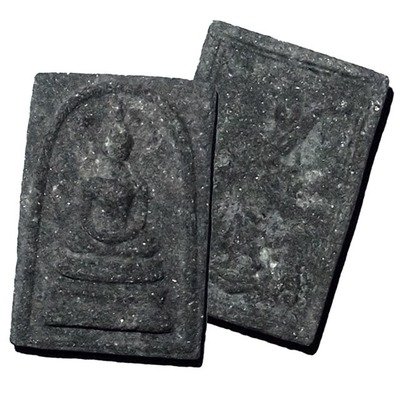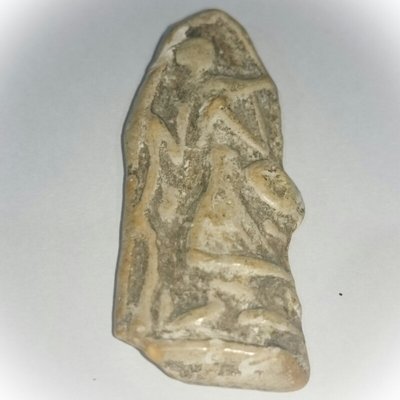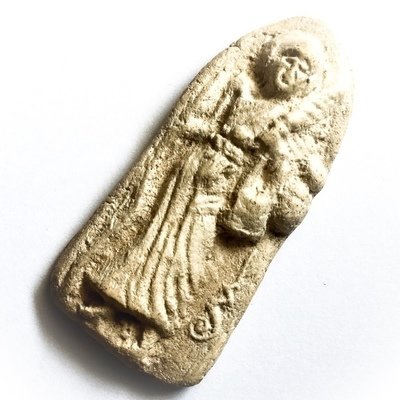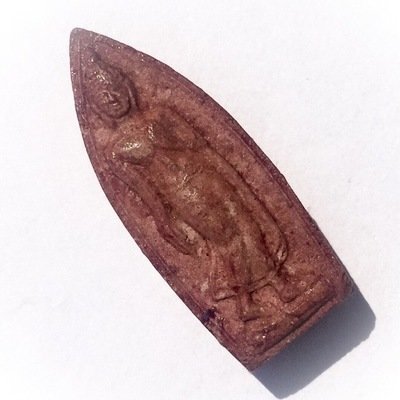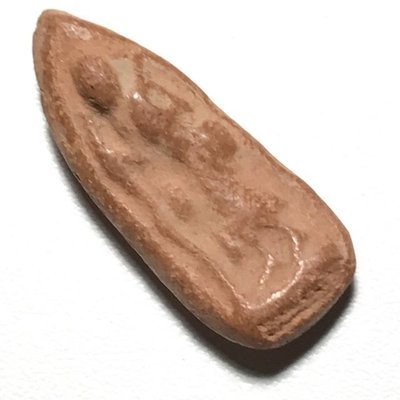
Ancient Amulet Store – Purveyors of preferred Classic Thai Buddhist Amulets for the True Devotee and Distinguished Collector
Discover the immensely deep and fascinating world of Vintage Thai Buddhist Amulets. Ancient Amulet is a long term established and internationally recognized Vintage Amulet Shop, and A Trusted Source for Classic Thai Buddhist Amulets for Devotees and Discerning Collectors, and is one of the many sub projects of informational sources created by Thai Amulet, Buddhism and Thai Occult Expert, Ajarn Spencer Littlewood . as part of his ‘Buddha Magic Project‘
Ancient Amulet provides authentic Antique and Rare Thai Amulets of the Pre and Early Post-Modern Era, of high esteem and Sacred Value, to revere, study and collect. Our Ancient Thai Buddhist Amulets are selected from the finest exhibits we can discover, and given diligent study and authentication processes. Our collection showcases time-honored amulets crafted by ancient masters, boasting captivating qualities and representing the esteemed Pra Niyom class. We offer authentic, highly valued ancient Thai Buddhist amulets from the pre and early post-modern eras, carefully selected from the finest exhibits and thoroughly examined. We invite you to study, revere, and collect these classic amulets from ancient masters, and to learn about their magical aspects and the art of amulet evaluation
Pra Sivali Long Rak Pid Tong Hlang Yant Bai Pad 2504 BE - Luang Phu Toop Wat Kae Nang Lerng
Pra Sivali Long Rak Pid Tong Hlang Yant Bai Pad 2513 BE Long Rak Pid Tong Hlang Yant Bai Pad - A rare Classic Pim Niyom Amulet from the Great Luang Phu Toop, of Wat Kae Nang Lerng (2441 - 2533 BE).
Pra Racha Dhamma Wicāra, or, as common folk know him, 'Luang Phu Toop' of Wat Kae Nang Lerng, was a highly revered monk and esteemed acclaimed member of the ten officially recognised makers of Pra Somdej amulets within the legendary Dtamra of Somdej Pra Puttajarn (Dto) Prohmrangsri's classic methods of creating Pra Somdej amulets.
He was acclaimed by devotees for his powerful Wicha Akom, and was the creator of a vast range of different amulets, all of which are now extremely rare to encounter, and highly prized within his cult inner circle of collectors and devotees.
This Pra Sivali Amulet is one of the rarest items, and is an extremely beautiful exhibit, which has been covered with 'rak' herbal lacquer and pure 96% gold leaf. The rear face of the amulet has the Sacred Yant Bai Pad embossed.

He was acclaimed by devotees for his powerful Wicha Akom, and was the creator of a vast range of different amulets, all of which are now extremely rare to encounter, and highly prized within his cult inner circle of collectors and devotees. This Pra Sivali Amulet is one of the rarest items, and is an extremely beautiful exhibit, which has been covered with 'Rak' herbal lacquer and pure 96% gold leaf.
Luang Phu Toop was born in Tambon Bang Luang Iang in Ayuttaya, on he 11th of April 2411 BE. His Father was called 'Dech' and Mother went under the name of 'Phong'. Luang Phu Toop lost his parents about the time of hs first birthday, after which he stayed with relatives in Bangkok, who were Lordly Family Lineage, namely Jao Praya Racha Supamidtr, and Tan Phu Hying Plaek. Luang Phu Toop learned Khom Agkhara Script and Pali Sanskrit at an early age as he was still attending school, at the temple close by to his relatives home.
In the year 2463, Luang Phu Toop ordained at Wat Suntorn Dhamma Dhana (pronounced 'Wat Suntorn Tamma Tan' in Thai), popularly known as Wat Kae Nang Lerng. HIs Upachaya Ordaining Officer was tan Jao Kun Tamma Warodom, the Abbot of Wat Benjamabopit. His Pra Gamma Wājājarn was Pra Ariya Muni, the Abbot of Wat Tewarachagunchorn. Pra Kroo Puttaban (Luang Por Naedtr), the Abbot of Wat Sontorn Tamma Tan was his Pra Anusawanajarn Witness.
He received the 'Chāyā' (Ordained Monk's name), of 'Khema Siri'. Once he was Ordained, Luang Phu Toop studied Kammathāna Vipassanā, and Dhamma, and Putākom (Buddha Magic) with the Great Luang Por Parn of Wat Bang Nom Kho in Ayuttaya for a long time.
After Luang Phu Toop returned back to Bangkok thereafter, he would still return often throughout the years, to continue his studies with Luang Por Parn. As time went on, Luang Phu Toop came to become friends with Luang Por Khant of Wat Nok Grajarp, who introduced him to the 'Wicha Chueak Kart Aew' (magical cord belt making), which he mastered under the tutelage of Luang Por Khant.
Luang Phu Toop also went on to master a number of other magical Wicha with the great Luang Por Chaem of Wat Ta Gong in Nakorn Pathom, and with the Legendary Luang Por Ngern of Wat Don Yai Horm, because Luang Por Ngern would often visit wat Ta Gong to see Luang Por Chaem, and so Luang Phu Toop was blessed to receive Wicha from both of these Immensely Powerful Sorceror Monks.
Luang Phu Toop was a very diligent monk who would accept and fulfil all the requests he received from his superiors, and was never lazy or selfish in his behaviour. He became highly respected and beloved by his companions in the Sangha during his early years as a Samanera Novice Monk, and was a shining example to the other Novice Monks, inspiring and driving them to excel in their duties.Luang Phu Toop was responsible for a great deal of helpful activities in assisting the Abbot of Wat Kae Nang Lerng in the development of the temple, and eventually was elected Vice Abbot.
In the year 2471 BE, Luang Phu Toop was elected to become the Abbot of Wat Sontorn Tamma Tan (Wat Kae Nang Lerng), and developed the Temple until it grew to become a Great Temple, as seen today, and in the Year 2477 BE, he was given the Honorable Official Status of Pra Kroo Sanya Badtr. Consequently, in the Year 2495 BE, he was given the Official Status of Pra Racha Kana (Bishop) by Royal Decree. Luang Phu Toop is known for his many different Amulets which he created, which he began to make in the Year 2482 BE, by co-creating an edition with the Legendary Luang Por Chaem of Wat Ta Gong.
This first edition was the Pra Somdej Sam Chan Buddha on 3 Tiered Dais, The Pra Rod Buddha Amulet, The Pra Pim Nang Kwak Supawadee Amulet. All of these Amulets were created in Nuea Pong Pasom Din Buchaniyasathan (Muan Sarn Sacred Powders mixed with earths from Sacred Shrines), and also in a second Sacred Substance, namely Pong Bailan Long Rak Chab Nuea Nai Si Dork Tao (Black Parchment Powders with Lacquered Surface and Gray Inner Color). All models had deep hand spell inscriptions in the rear face.
Every time Luang Phu Toop created an Edition of Amulets, he would distribute them to devotees who came to the temple and helped out. The Amulets which remained left over afterwards would be then hidden in the base of the Buddha Statue within the Uposatha Shrine Room. The Amulets of Luang Phu Toop include Sacred Powder Amulets, Chueak kart Aew Macic Cord Belts with Takrut. His most famous editions are the 2504 and 2513 Editions. The 2513 Edition saw his first edition Guru Monk Coin released, which is a Highly Preferred Pra Niyom Master Class Amulet. Luang Phu Toop remained as Abbot of Wat Kae Nang Lerng and was highly respected and beloved by the Local Folk, until his final passing on the 29th May 2533, at the age of 92 Years Old
Kata Pra Sivali
Ahang Wantaami Siiwaliitaadtuyo Ahang Wantaami Sappaso
Kata to Bucha Pra Sivali
Iminaa Saggaaraena Siiwalii Thaerang Apibpuchayaami
(When you chant this whilst making Bucha to Pra Sivali, then say in your inner heart silently the following words;
Bpuchidtang Sappalaapang Bprasitti Mae Thaerassa Aanupaawaena Sappa So Thee Pawandtu Mae
Kata Pra Sivali (Luang Por Guay - Wat Kositaram, Chaynat)
Siiwalii Ja Mahaa Thaero Bpajjaya Laapa Buchidto Manusso Taewadtaa Into Pramaayamo Yagkha Waa Bpidtassa Nirandtarang Bpana Laapa Saggaarae Aanaendti Nijjang Siiwalii Thaerassa Laapo Saggaaro Hodti Siiwalii Mahaa Thaeranja Buchagassa Sataawaabi Kaatanja Sangwadt Dtanassa Laapo Ja Saggaaro Hodti Thaerassa Aanupaawaena Laapo Mae Hodtu Sappataa Aedtaena Sajja Wachaena Laapo Mae Hoedtu Sappataa
Kata for chanting when going on Business trips
Na Chaa Liidti Bpasitti Laapaa
Kata Hua Jai Pra Chimplii (heart Mantra of Pra Chimplii)
Saatu Siwalii Ja Mahaa Thaero Na Chaa Li Dti Bpasitti Laapaa Bpasanna Jidt Dtaa Sataa Hondti Bpiyang Ma Ma Sappae Chanaa Pahu Chanaa Sappae Tisaa Samaa Kadtaa Gaala Pochanaa Wigaala Pochanaa Aakaj Chaaya Aakaj Chaahi Bpiyang Ma Ma
Short Kata Pra Sivali
Siiwalii Ja Mahaa Thaero Chay Ya Sitto Mahit Tigo Thaerassa Nupaawaena
Katas for Pra Sivali for each day of the week
Sundays (Chant 6 times) - Chimpalii Ja mahaa Naamang Sappa Laapang Pawissadti Thaeras Saanupaawaena Sataa Hondtu Bpiyang Ma Ma
On Mondays (Chant 15 times) - Yang Yang Bpuriso Waa Idthii Waa Turaehi Waa Sami Bpaehi Waa Thaeras Saanpaawaena Sataa Hondti Bpiyang Ma Ma
On Tuesdays (Chant 8 times) - Chimpalii Ja Mahaa Thaero Soho Bpajjayaa Timhi Chaeya Laapo Mahaa Laapo Sappa Laapaa Pawandtu Sappataa
On Wednesdays (chant 17 times) Tidt Dtidt Tha pa Wae Rachaa Biyaa Ja kara Dtu Mae Yae Saaradt Dti Niran Dtarang Sappa Sukhaa Wahaa
On Thursdays (Chant 19 times) - Chimpalii Ja Mahaa Thaero Yagkhaa Taewaa Pi Bpuchidto Soraho Bpajjayaa Timhi Ahang Wantaami Sappataa
On Fridays (Chant 21 times) - Chimpalii Ja Mahaa Thaero Taewadtaa nara Bpuchidto Soraho Bpajjayaa Nimhi Mahaa Laapang Garondtu Mae Laapaena Udt Dtamo Hodti Sappa Laapang Pawandtu Sappataa
On Saturdays (Chant 10 times) Chimpalii Ja Mahaa Naamang Intaa Prahmaa Ja Bpuchidtang Sappa Laapang Prasitti Mae Thaeras Sanupawaena Sataa Sukhii Bpiyang Ma Ma


